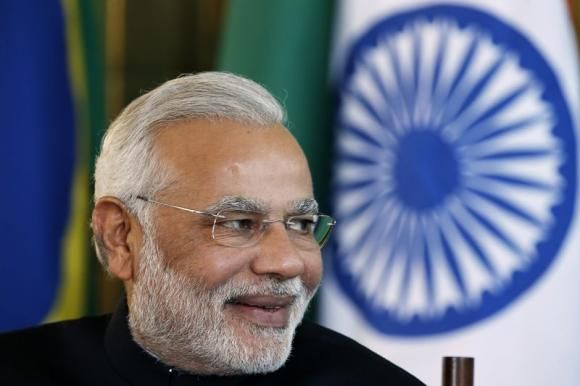 | « Back to article | Print this article |
 Persuading LPG customers to give up their subsidy and introduction of Suvidha trains to scrap all fare concessions may have lessons for economic reforms, notes A K Bhattacharya, Editor, Business Standard
Persuading LPG customers to give up their subsidy and introduction of Suvidha trains to scrap all fare concessions may have lessons for economic reforms, notes A K Bhattacharya, Editor, Business Standard
Two recent initiatives of the Narendra Modi government seem to be a pointer to a possible road map for ensuring improved governance, along with a new version of economic reforms.
These are initiatives not commonly seen in economic administration.
These initiatives are also a little unusual, for they rely on a mix of moral persuasion, use of technology, a sharply focused campaign and a gradualism that may well have lessons for those who only believe in big-bang reforms.
One of the initiatives pertains to the way the government has persuaded almost a million customers of subsidised cooking gas to give up the subsidies they enjoy.
This number, at present relatively small, is going up every day, thanks to the impact a government campaign has had on people.
The second initiative pertains to the Indian Railways to introduce new passenger train services, called Suvidha trains, which will gradually replace all the 50 premium trains and, more importantly, phase out all types of fare concessions that are enjoyed by passengers because of their age or status.
There are many other features of the campaign asking people to give up their cooking gas subsidy and of the proposed introduction of Suvidha train services. But more of that can come later.
First, it will be important to understand the context of both the new initiatives and why they will have lessons for all other departments of the Union government and indeed state governments that offer similar or different types of services.
The state-controlled oil marketing companies supply cylinders of liquefied petroleum gas or LPG to an estimated 150 million households.
The price at which this is sold has a subsidy element of more than 30 per cent even at the current depressed crude oil prices. Each household is entitled to 12 subsidised cooking gas cylinders in a year.
In the past, governments have tried many methods in the book to target its subsidy only to the poor and needy among the 150 million households.
Attempts were made to reduce the number of subsidised gas cylinders to be supplied to a household in a year. Proposals were mooted to exclude from the subsidy scheme those who were above a certain income bracket or paying taxes.
None of these actually worked and were either rolled back or discarded.
Meanwhile, the technology backbone to map the profile all the subscribers was readied and a scheme implemented to link the payment of subsidy for each cylinder through a bank account under the direct benefits transfer scheme.
And then came what could well be the masterstroke of the Modi government.
It launched a nation-wide campaign to persuade the economically well-off sections of society to give up the subsidy they received on cooking gas cylinders.
The plea was that their act of renunciation would help a needy household migrate to LPG as cooking fuel, bringing along with it other benefits for the economy and ecology.
The pleasant surprise is that this campaign has worked.
The original idea of asking people to give up their subsidy was mooted by the previous government.
But the momentum picked up from August last year, when the number of people having given up the subsidy was only 2,500.
By the time Modi gave it a big push in March this year, 280,000 households had given up their cooking gas subsidy.
And by the end of June, the number of those who gave up the subsidy rose to over 700,000. Now it has crossed a million.
The government, too, has saved its subsidy bill -- by about Rs 476 crore (Rs 4.76 billion).
This may be a small amount compared to the total LPG subsidy of over Rs 36,000 crore (Rs 360 billion) spent in 2014-15, but the achievement should not be underestimated.
And all this with the help of a campaign, backed of course by a technology backbone that makes giving up the subsidy an easy task.
The Indian Railways’ initiative has chosen a different path.
The newly launched Suvidha trains will scrap all fare concessions.
They would gradually replace the premium trains and help the Railways recover its costs and make a reasonable profit. The question of targeting the fare concessions to the needy sections remains to be resolved.
That will perhaps be the next stage of railway reforms.
This should not be difficult, given the income databases available with the government.
The bigger question, however, is whether this would encourage state governments including Delhi Chief Minister Arvind Kejriwal to persuade the economically well-off people in their states to give up their subsidies or they would need to use technology to deny sops to the so-called creamy layer.